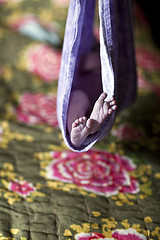
“You remind us that anything is possible,” President Obama tweeted at Tommy Caldwell and Kevin Jorgeson after they summited El Captain in Yosemite National Park. The pair “free climbed” the world’s largest block of granite, only using ropes and harnesses in the case of emergency. Many of the world’s best climbers are those who take the biggest risks—and most of them happen to be from the United States.
To kick off the “What It Means to Be American” event “Are Americans Risk-Takers?” TIME featured a roundtable discussion about why risk-taking seems unique to American culture. Zulema Valdez, sociologist and author of The New Entrepreneurs: How Race, Class, and Gender Shape American Enterprise, said that the risk-taking mentality in the United States comes from the common belief that America is the land of opportunity: “where anyone with a good idea, a positive attitude, and a willingness to work hard can own a business and succeed.” Indeed, the U.S. has the highest percentage of entrepreneurship among industrialized nations.
What the achievement ideology leaves out, however, is that the United States is highly stratified, and successful people rarely achieve the American dream through hard work alone. The most successful business owners tend to be white, middle-class men. While they surely worked hard and took risks, most were not risking total failure. Valdez told TIME:
The reality… is that risk-taking, while perhaps a necessary ingredient for entrepreneurship, is not sufficient in the absence of human capital (education and work experience), social capital (business networks), and financial capital (personal savings, wealth, access to credit or loans).
In other words, even if a person takes a risk, the right resources act as a safety net and diminish the consequences of failure. For Caldwell and Jorgeson, free climbing El Captain, back-up plans and high-tech gear lowered the risk of plummeting to their deaths—and enabled them to take more risks to proudly reach the summit. Those aiming to achieve the American Dream need human, social, and financial capital rather than ropes and harnesses.

